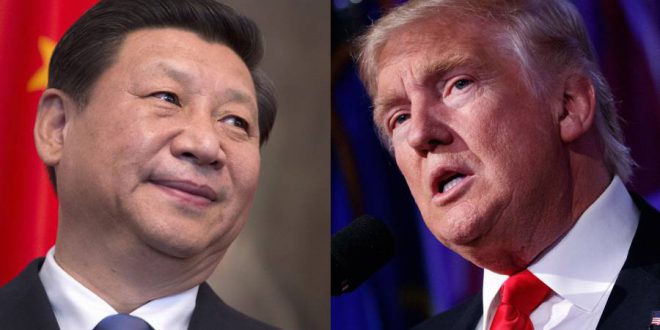WTI fell below $60 per barrel for the first time in two months. dragged down by growing fears of a global economic slowdown.
Oil had been stuck between geopolitical risk and supply outages on the one hand. and the U.S.-China trade war and grim economic news on the other. Depending on the day. whichever concern seemed more pressing drove oil price movement.
For the time being at least. economic concerns seem to be winning out.
While the Trump administration announced higher tariffs on $250 billion worth of Chinese goods a few weeks ago. global financial markets seemingly thought there was a decent chance that the worst would be avoided and that the two sides would reach a deal.
However. the rhetoric on both sides has changed. with top American and Chinese officials digging in and striking a more nationalistic tone. The Trump administration has not only hiked tariffs. but has since taken a hardline on Huawei Technologies and is rumored to be drawing up sanctions on other Chinese companies.
For its part. China is beginning to steel itself. a sign that it won’t take the conflict lying down. “We are here at the starting point of the Long March to remember the time when the Red Army began its journey.“ Xi said at a rally in Jiangxi province. “We are now embarking on a new Long March. and we must start all over again!“ Only a few weeks ago. China was much more cautious in how it discussed its standoff with the U.S. The shift in language suggests that the trade war will be a protracted affair.
The higher tariffs – 25 percent on $200 billion of Chinese imports. and reciprocal tariffs on $60 billion of U.S. imports into China – is bad enough. A worse scenario awaits. however. Trump has threatened another round of tariffs. consisting of a 25 percent levy on a further $300 billion of Chinese imports. which would just about cover everything. Once seen as unthinkable. analysts at Nomura have made that scenario their baseline forecast and said the odds of such an outcome is roughly 65 percent. as Bloomberg notes.
“The U.S.-China relationship has moved further off track over the past two weeks after a period of what appeared. on the surface. to be steady progress towards reaching an admittedly narrow agreement.“ Nomura analysts wrote. “We do not think the two sides will be able to get back to where they seemed to be in late April.“
Oil markets have taken note. Oil prices fell sharply on Wednesday and WTI dipped below $60 per barrel during midday trading on Thursday. Crude is set for its worst week in six months.
In addition to trade fears are tangible cracks in the global economy. Global auto sales continue to slow and automakers around the world are slashing their payrolls. The latest was Ford. which just announced that it was laying off 7.000 people. or 10 percent of its white-collar workforce. In total. roughly 38.000 job cuts have been announced by carmakers around the world.
The gloomier outlook comes at a time when U.S. crude oil inventories continue to rise. Stocks jumped by another 4.7 million barrels last week. rising to their highest level in nearly two years. The increase in inventories is feeding the narrative that the oil market is not. in fact. under-supplied. despite a series of major supply outages around the world.
U.S. crude inventories should not necessarily be taken as gospel. however. especially since OPEC+ is watching closely. “It is misleading to look only at stock trends in the US when assessing the situation on the global oil market.“ Commerzbank wrote in a note. “After all. stocks in the US are influenced considerably by US-specific factors such as the rise in domestic oil production and insufficient pipeline capacities. Consequently. WTI is still trading at a significant discount of nearly $10 as compared with Brent. What is more. the further rising US stocks could make Saudi Arabia even more reluctant to step up production.“
The sudden weakness in the economy and the oil market adds pressure on OPEC+ to keep its cuts in place in the second half of the year. Commerzbank said that price weakness is likely “temporary.“
But precisely because U.S. inventory data is so closely watched. it may take inventory declines before everyone starts believing that the oil market is seriously tightening up. For now. economic gloom is taking hold.
 Iran Energy News Oil, Gas, Petrochemical and Energy Field Specialized Channel
Iran Energy News Oil, Gas, Petrochemical and Energy Field Specialized Channel




